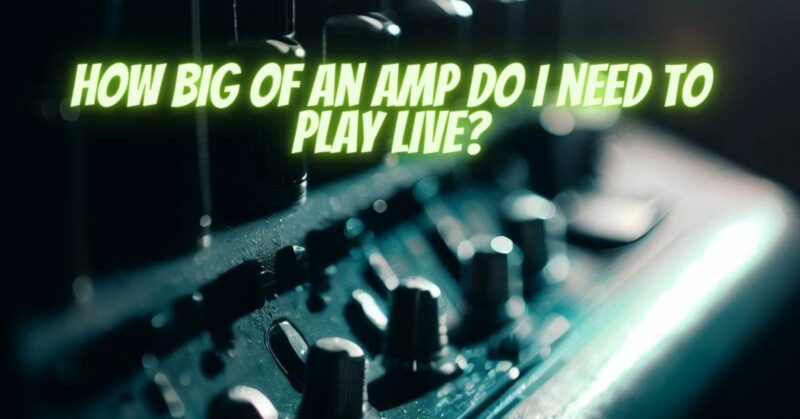Selecting the appropriate size of an amplifier for live performances is a crucial decision that directly impacts your stage presence, sonic projection, and overall performance quality. The size of the amp you need depends on various factors, including the size of the venue, your band’s instrumentation, the genre of music, and your personal playing style. In this article, we’ll delve into the considerations involved in determining how big of an amp you need to play live effectively.
Venue Size and Acoustics
Small Venues: For intimate spaces like coffee shops, small bars, and house concerts, a lower-wattage amplifier (around 15-30 watts) is often sufficient. These venues generally have limited stage space and lower volume requirements.
Medium Venues: Medium-sized venues, such as clubs and theaters, may require an amplifier with higher wattage (30-50 watts). This ensures your sound cuts through the mix while maintaining tonal clarity.
Large Venues and Outdoor Stages: When performing in larger venues or outdoor stages, you’ll need a more powerful amplifier (50 watts or higher) or even a full amplifier stack. High wattage allows your sound to reach the audience without distortion or loss of definition.
Band Dynamics and Genre
Solo Performers: Solo performers can often get by with lower-wattage amps due to the absence of other instruments competing for sonic space.
Small Bands: If you’re part of a small band with acoustic instruments or a jazz ensemble, a mid-range amplifier can suffice, as the overall volume levels are usually more controlled.
Rock and Metal Bands: Rock and metal bands benefit from higher-wattage amplifiers (50 watts or more) to cut through heavy drumming and distortion-laden arrangements.
Personal Playing Style
Clean Tones: If your playing style relies heavily on clean tones and intricate dynamics, a lower-wattage amp can deliver the desired clarity without overwhelming the audience.
High Gain and Distortion: For guitarists who use high-gain tones and aggressive distortion, a higher-wattage amp ensures that the nuances of your playing and the intricacies of your tone are preserved.
Additional Considerations
- Stage Volume vs. Front-of-House Mix: Remember that the front-of-house sound engineer is responsible for the audience’s experience. Your stage volume doesn’t need to be excessively loud; the amplifier should provide a monitor for you while the audience hears the mixed sound.
- Amplifier Size and Portability: Balance your need for power with the practicality of transporting and setting up your amplifier. Smaller venues might not have ample stage space.
- Microphone Usage: Many larger venues and festivals mic your amplifier through the venue’s sound system. In such cases, the wattage of your amp might matter less.
- Speaker Size: Larger speaker sizes (12 inches and above) tend to project sound more effectively, especially in live scenarios.
Choosing the right amp size for live performances involves a thoughtful evaluation of venue size, band dynamics, playing style, and genre. Your amplifier should serve as a tool that enhances your sound without overpowering it. As you progress in your music career, your amp needs may evolve based on the venues you play and the artistic direction you pursue. By carefully assessing these considerations, you can confidently step onto the stage with an amplifier that elevates your performance and resonates with your audience.


